UNDERSTANDING CANNABINOIDS
The cannabis plant is well known for its psychotropic and medicinal qualities, as well as its unique effect on the human body and psyche. The chemicals or compounds responsible for these effects are known as cannabinoids. They are highly complex in nature and affect the human body in various ways.
Cannabinoids are a group of substances that are structurally related to THC (Delta-9-Tetrahydrocannabinol) or molecular compounds that bind to cannabinoid receptors in the human body. The term cannabinoid also refers to a unique group of secondary metabolites found in the cannabis plant, which are responsible for the plants unique pharmacological effects.
Cannabinoids are a group of substances that are structurally related to THC (Delta-9-Tetrahydrocannabinol) or molecular compounds that bind to cannabinoid receptors in the human body. The term cannabinoid also refers to a unique group of secondary metabolites found in the cannabis plant, which are responsible for the plants unique pharmacological effects.
There are three general types:
Phytocannabinoids - compounds that occur uniquely in cannabis plants.
Endogenous cannabinoids - produced in the human body and supposedly in other mammals as well.
Synthetic cannabinoids - structurally similar compounds, produced synthetically under laboratory conditions.
Phytocannabinoids - compounds that occur uniquely in cannabis plants.
Endogenous cannabinoids - produced in the human body and supposedly in other mammals as well.
Synthetic cannabinoids - structurally similar compounds, produced synthetically under laboratory conditions.
CANNABINOID RECEPTORS
There are certain receptors in the human body that the cannabinoids can bind to, called cannabinoid receptors
As mentioned before, some of the cannabinoids are endogenous, which means that they are produced naturally inside the human body. Others are exogenous and must thereby be introduced into the body through the consumption of the cannabis plant. No matter which type of cannabinoid in question, they bind to one of two receptors found in the human body.
These are currently known as: CB1 and CB2
- CB1 receptors are found primarily in the brain. They are also found in both the male and the female reproductive systems. CB1 receptors account for the euphoric and anticonvulsive and relaxing effects of cannabis.
- CB2 receptors are almost exclusively found in the immune system, with greatest density in the spleen. The CB2 receptors account for the anti-inflammatory and other therapeutic effects of cannabis.
These are currently known as: CB1 and CB2
- CB1 receptors are found primarily in the brain. They are also found in both the male and the female reproductive systems. CB1 receptors account for the euphoric and anticonvulsive and relaxing effects of cannabis.
- CB2 receptors are almost exclusively found in the immune system, with greatest density in the spleen. The CB2 receptors account for the anti-inflammatory and other therapeutic effects of cannabis.
Several areas of the brain have high densities of these receptors,
which accounts for the different effects that the drug has on us.
which accounts for the different effects that the drug has on us.
Some of the impact on our nervous system is positive and the stimulus from cannabinoids can counteract the negative effect of certain medical conditions. There are however also some adverse effects that arise from long time use, mainly those affecting the hippocampus and the long term memory. Long-term use can also lead to a psychological condition called psychosis, which is often characterized by loss of contact with reality, resulting in unusual or bizarre behavior.
Research has shown that these adverse effects might become permanent when cannabis is used from an early age but other than that, the negative effects seem to be merely temporary and all neural and mental functions will be restored to their original state when cannabis is no longer introduced into the nervous system.
Although cannabis is a relatively harmless drug compared to some of the legal alternatives, it should not be disregarded that it may cause problems after long-time or chronic use.
Research has shown that these adverse effects might become permanent when cannabis is used from an early age but other than that, the negative effects seem to be merely temporary and all neural and mental functions will be restored to their original state when cannabis is no longer introduced into the nervous system.
Although cannabis is a relatively harmless drug compared to some of the legal alternatives, it should not be disregarded that it may cause problems after long-time or chronic use.
TYPES OF CANNABINOIDS
There are at least 80 known cannabinoid compounds that have been isolated from the plant.
THC (Delta-9-Tetrahydrocannabinol), CBD (Cannabidiol) and CBN (cannabinol)
are the most prevalent cannabinoids and have received the most attention in scientific studies.
Other common and lesser cannabinoids are listed below:
- CBG Cannabigerol
- CBC Cannabichromene
- CBL Cannabicyclol
- CBV Cannabivarin
- THCV Tetrahydrocannabivarin
- CBDV Cannabidivarin
- CBCV Cannabichromevarin
- CBGV Cannabigerovarin
- CBGM Cannabigerol Monoethyl Ether
Here follows the breakdown of each of the cannabinoids relevant to the biosynthetic chain that eventually leads to the fully realized THC compound, as well as its degradation product.
CANNABIGEROL (CBG)
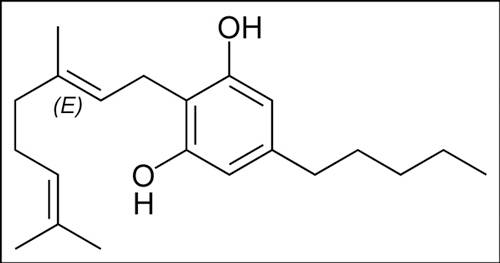
CBG is a precursor of higher cannabinoids such as CBC, CBD, THC and there are very small amounts of it in drug strains although it occurs in greater concentrations in hemp. It's a non-psychoactive cannabinoid but it is known for lowering blood pressure and it is also useful for treating mood disorders.
CANNABICHROMENE (CBC)
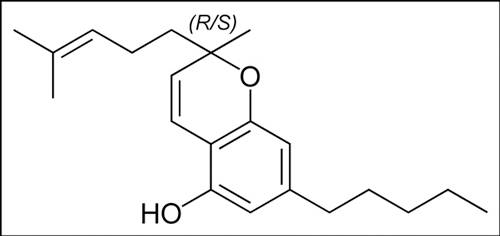
CBC is nonpsychoactive and it is used as an "energy-storage" compound which is readily converted back to CBG if needed. Some evidence show that CBC may play a role in providing the anti-inflammatory effects of cannabis and that it may also contribute to the overall analgesic or pain killing properties, but further research is needed to verify these assumptions.
CBC is nonpsychoactive and it is used as an "energy-storage" compound which is readily converted back to CBG if needed. Some evidence show that CBC may play a role in providing the anti-inflammatory effects of cannabis and that it may also contribute to the overall analgesic or pain killing properties, but further research is needed to verify these assumptions.
CANNABIDIOL (CBD)
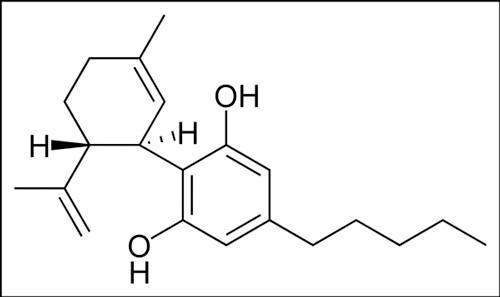
Cannabidiol is nonpsychoactive and was initially thought to have no effect on the psycho activity of THC. Recent evidence however show that smokers of cannabis are less likely to experience schizophrenia-like symptoms if there is a higher CBD to THC ratio. Experiments show that participants experienced less intense psychotic effects when intravenous THC was co-administered with CBD. It has been hypothesized that CBD acts as an allosteric antagonist at the CB1 receptor and thus alters the psychoactive effects of THC, resulting in a more easily manageable high.
CBD is generally considered to have more medicinal properties than THC. It appears to relieve convulsion, inflammation (and thereby also migraines), anxiety and nausea. That is why strains with a high concentration of CBD is suitable for medicinal use.
Although CBD has its own particular medicinal value it is not more important than THC when it comes to treating various afflictions. It is the interaction between the two that gives rise to the effect that sometimes alleviates the symptoms of various medical conditions.
CBD has a greater affinity for the CB2 receptor than for the CB1 receptor, meaning that its effect is mostly in the body and not so much in the head. CBD shares a precursor with THC and is the main cannabinoid in low-THC cannabis strains like hemp.
Landrace strains, usually of indica heritage, contain higher concentrations of CBD than recreational drug strains, which are usually bred towards a higher concentration of THC. This is the reason why strains containing high ratios of CBD can be difficult to find.
CBD is generally considered to have more medicinal properties than THC. It appears to relieve convulsion, inflammation (and thereby also migraines), anxiety and nausea. That is why strains with a high concentration of CBD is suitable for medicinal use.
Although CBD has its own particular medicinal value it is not more important than THC when it comes to treating various afflictions. It is the interaction between the two that gives rise to the effect that sometimes alleviates the symptoms of various medical conditions.
CBD has a greater affinity for the CB2 receptor than for the CB1 receptor, meaning that its effect is mostly in the body and not so much in the head. CBD shares a precursor with THC and is the main cannabinoid in low-THC cannabis strains like hemp.
Landrace strains, usually of indica heritage, contain higher concentrations of CBD than recreational drug strains, which are usually bred towards a higher concentration of THC. This is the reason why strains containing high ratios of CBD can be difficult to find.
TETRAHYDROCANNABINOL (THC)
Tetrahydrocannabinol, also known as delta-9-tetrahydrocannabinol (Δ9-THC), is the primary psychoactive component found in the cannabis plant. It was first isolated by Raphael Mechoulam, Yechiel Gaoni, and Habib Edery from the Weizmann Institute of Science in Rehovot, Israel, in 1964.
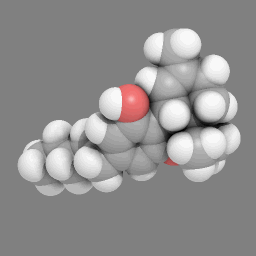
This is the main compound that gives rise to the high that is tightly linked with the cannabis plant. It affects several areas of the brain simultaneously and can therefore give rise to an assortment of experiences, ranging from altered perception of time and the self, to feelings of euphoria and relaxation all through the body.
Medically, it appears to be analgetic, meaning that it is capable of alleviating even severe pain. It is also known to be neuroprotective, which rules out the possibility of brain damage, which was initially proposed to follow from heavy use of the plant. It has approximately equal affinity for the CB1 and CB2 receptors. By binding to CB1 receptors (the ones in brain) it produces the high that we are so familiar with. That is why the effects of THC is more cerebral, than the effect of CBD, which seems to have a greater affinity for the CB2 receptor.
TETRAHYDROCANNABIVARIN (THCV)
THCV is the propyl homologue of THC and is similar in structure. The propyl cannabinoids have so far been found in some varieties originating from Southeast and Central parts of Asia as well as Africa, Afghanistan, Pakistan, India and Nepal. What are considered some of the most potent marijuana varieties also contain propyl cannabinoids. Some examples include traditional African landrace sativas as well as pure Thai varieties and various hybrids known as Haze.
There are no reports on its activity in humans. From animal studies it appears to be much faster in onset and quicker to dissipate than THC. It appears that it's activity is somewhat less than of THC. THCV is known for removing the "ceiling" from the high, giving the smoker the impression that he only gets higher with every passing minute until the effect eventually wears off.
CANNABINOL (CBN)
Cannabinol is the primary degradation product of THC and increases in concentration with plant age. The concentration of this product in the bud is heavily dependent on the time of harvest. Harvesting the bud at a late stage also means that the concentration of CBN in relation to THC will be higher when compared to the peak of THC production.
CBN content also increases as THC degrades during storage and with exposure to light and air. It is only mildly psychoactive and can cause "fuzzy head", drowsiness, disorientation and sleepiness in the smoker, properties that can be considered unpleasant in nature compared to the clear high of the THC. Its affinity to the CB2 receptors is higher than for the CB1 receptor, meaning that it mostly affects the body.
THC BIOSYNTHESIS
In order to fully understand and appreciate the most important cannabinoids, we first have to take a look at how they are produced inside the plant from lesser, precursor compounds.
By looking at this picture we get a better view of the metabolic pathway that leads to the desired psychoactive product called THC.
The metabolic chain that leads to THC starts when geranyl pyrophosphate combines with olivetolic acid, in order to create cannabigerolic acid (CBGA). This carboxylic acid is the shared precursor of all the three major cannabinoids that can be found in the plant; THC, CBD and CBC.
The cannabigerolic acid then forms into the carboxylic acid precursor of each of the named compounds. Cannabichromenic acid (CBCA) turns into the nonpsychoactive compound CBC. Cannabidiolic acid (CBDA) turns into the therapeutic cannabinoid CBD and finally tetrahydrocannabinolic acid (THCA) turns into the much sought after and highly psychoactive cannabinoid THC or tetrahydrocannabinol.
The carboxylic acids are characterized by the presence of the carboxyl group (-COOH). The carboxyl group splits off from the acid compounds through a process called decarboxylation, giving rise to CO2 in the process. This happens with age (curing) or when they are heated (smoked), effectively turning them into the final products. The curing process that the buds go through inside the jars, can actually be considered a slow decarboxylation process, so the result is the same. This however means that the plant can contain both the carboxylic acid form of THC as well as the finished product. More or less, depending on when it is measured.
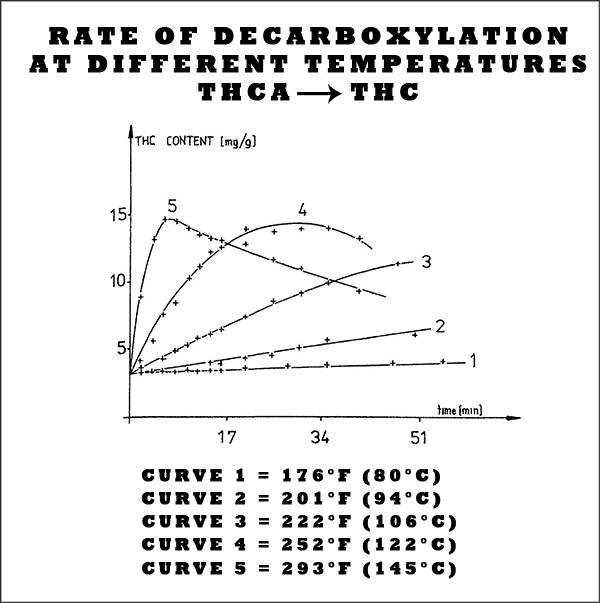
As you can see, the rate of decarboxylation of THCA into THC is heavily dependent on temperature. Note that temperatures around 250°F (120°C), produce the optimum curve when measured against time, peaking at around 30 minutes. Keeping the temperature at 270°F (130°C) for 15-20 minutes, should produce similar results. Going much higher than that is probably not a good idea. These temperatures might come in handy when you are cooking with cannabis. Note however that temperatures around and below 212°F (100°C), are not high enough for a proper conversion.
THC later oxidizes and is reduced into CBN further down the chain, which is why we keep our buds in airtight jars. The oxidation process is also sped up with high temperature and light, which is why it's a good idea to store your buds in a cool and dark place. The process cannot however be halted completely, which means that very old bud will contain mostly this degradation product.
The cannabigerolic acid then forms into the carboxylic acid precursor of each of the named compounds. Cannabichromenic acid (CBCA) turns into the nonpsychoactive compound CBC. Cannabidiolic acid (CBDA) turns into the therapeutic cannabinoid CBD and finally tetrahydrocannabinolic acid (THCA) turns into the much sought after and highly psychoactive cannabinoid THC or tetrahydrocannabinol.
The carboxylic acids are characterized by the presence of the carboxyl group (-COOH). The carboxyl group splits off from the acid compounds through a process called decarboxylation, giving rise to CO2 in the process. This happens with age (curing) or when they are heated (smoked), effectively turning them into the final products. The curing process that the buds go through inside the jars, can actually be considered a slow decarboxylation process, so the result is the same. This however means that the plant can contain both the carboxylic acid form of THC as well as the finished product. More or less, depending on when it is measured.
As you can see, the rate of decarboxylation of THCA into THC is heavily dependent on temperature. Note that temperatures around 250°F (120°C), produce the optimum curve when measured against time, peaking at around 30 minutes. Keeping the temperature at 270°F (130°C) for 15-20 minutes, should produce similar results. Going much higher than that is probably not a good idea. These temperatures might come in handy when you are cooking with cannabis. Note however that temperatures around and below 212°F (100°C), are not high enough for a proper conversion.
THC later oxidizes and is reduced into CBN further down the chain, which is why we keep our buds in airtight jars. The oxidation process is also sped up with high temperature and light, which is why it's a good idea to store your buds in a cool and dark place. The process cannot however be halted completely, which means that very old bud will contain mostly this degradation product.
This biological production of the much desired THC compound that has made the cannabis plant so famous, all take place inside something called a trichome. Trichomes are fine outgrowths or appendages on plants that resemble crystal mushrooms in cannabis. Trichomes are not unique to cannabis plants but the psychoactive components that can be found in it are.
These "mushrooms" are in fact stalked, glandular containers of cannabis oil, which matures as it goes through the transformation into THC from lesser cannabinoid compounds.
THE DIFFERENT TYPES OF TRICHOME GLANDS
Trichomes are fine outgrowths or appendages on plants, also called resin glands. Trichomes can vary in size and structure depending on the plant in question. We are however only interested in the trichomes found on cannabis plants.
There are three known types of glands that occur on the cannabis plant.
They are most heavily concentrated on the floral parts of the female plant:
They are most heavily concentrated on the floral parts of the female plant:
(Photo by Pistals)
Bulbous
These types of gland are the smallest (15-30 micron across). Anywhere from one to four cells make up the "foot" and "stalk," and one to four cells make up the "head" of the gland. They can be found everywhere on the surface of the plant that is above ground level. Head cells secrete a resin, presumably cannabinoids, and related compounds that accumulate between the head cells and the cuticle.
Capitate – Sessile
The second type of gland is larger (25 to 100 micrometers) and more numerous than the bulbous glands. They are called capitate, which means having a globular-shaped head. On immature plants, the heads lie flush, appearing not to have a stalk and are called capitate sessile. They have a stalk that is one cell high, although it may not be visible beneath the globular head. These cells secrete cannabinoids and related compounds.
Capitate – Stalked
These type of glands appear during flowering and occur especially on the bracts subtending a flower and seed and also small leaves that accompany the flowers. They contain the highest concentration of cannabinoids and can range in size from 150 – 500 microns. The male flowers also have stalked glands, but they are smaller and less concentrated than on the female plant. These resin glands contain the most THC, which is also why they are the most important. Good cannabis plants have mostly capitate-stalked glandular trichomes and in very high concentration.
(The structures pointed out by the red arrow is a cystolith hair that lack the bulbous head of the other trichomes.)
In order to determine the dominant type of trichome on your plant, you will need to look at the female flowers through magnification. Although different plants may seem as frosty as the next, it is actually the dominant type of trichome and the concentration in which it occurs that determines the potency of the final product.
The capitate-stalked glandular trichome changes color as it matures. Newly formed and immature glands are clear, glands reaching optimum THC production are cloudy or milky and amber trichomes have already passed their peak. By looking at the trichomes you can also determine the best time to harvest your plants. When most trichomes have gone cloudy and a few amber ones have appeared, the plant is at its peak.
INSIDE THE TRICHOME
THC and other cannabinoids are produced mostly in one place on the cannabis plant:
inside the heads of the capitate-stalked trichomes.
inside the heads of the capitate-stalked trichomes.
How it happens:
Organelles produced by the plant called Vacuoles - which contain phenols, a chemical compound similar to alcohol and another type of organelle called plastids - containing hydrocarbons called terpenes, make their way up the trichome stalk and combine inside the secretory cavity into a fibrous mat. This concentrated mat is hit by UV-B light waves, causing the creation of cannabinoids. Since all of the psychoactive ingredients are produced inside the trichome, these tiny resin heads have long been sought after by hash and oil makers and can be separated from the plant and harvest in a variety of ways.
Why Trichomes?
Cannabis and many other plants have evolved resin trichomes for variety of uses. They protect the plant from UVB light rays, especially Cannabis plant since THC has very good UV-B light absorption. It protects the plant from insects and animals and also provides protection for buds from low humidity and harsh winds.
It just so happens that in cannabis trichomes are produced »ingredients« that get us high... Lucky us, huh?
Well for some people this is more than a good luck. For those suffering from cancer it can be a lifesaver! Several recent studies have confirmed that THC, cuts tumor growth in common lung cancer in half and significantly reduces the ability of the cancer to spread! This was proved by Harvard study released on April 17, 2007. There are many studies done on this topic, some ranging back several decades. Just by browsing through information on the web, you will discover many articles and studies dealing with this subject. Although it might come as a surprise to you, these findings are far from new and have been known to the scientific community for some time.
-------------------------------------------------------------------------------------------------------------------------
I have been researching, studying and collecting information on the various cannabinoid compounds that can be found in this holy plant of ours for quite a while now. Although there is a lot of information posted on this topic, it is unfortunately scattered all over the forums so I thought that it was time for me to make a thread on this most important subject, so that we can all share information, thoughts, and facts about this beautiful plant and its "secret" ingredients that makes us all feel so good.
Everyone can add their thoughts, opinions, conclusions and facts, as long as you keep it constructive! Any useful contributions are much desirable. We will change, fix the guide throughout discussions as needed. As I said I am still learning about the whole thing, so if we do it together it can be more efficient and fun! So it is up to all of us how good, informative, useful the guide will be.
The guide was encouraged by our member Kodiak, who also gave lots of contribution to the guide. So, lots of credit goes also to him! Thank you very much bro!
The guide was encouraged by our member Kodiak, who also gave lots of contribution to the guide. So, lots of credit goes also to him! Thank you very much bro!

 Great insight. Well done, i especially like the 3D animation
Great insight. Well done, i especially like the 3D animation



